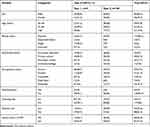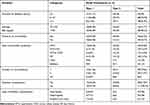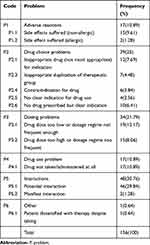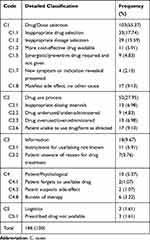Back to Journals » Diabetes, Metabolic Syndrome and Obesity » Volume 13
Drug-Related Problems and Their Predictors Among Patients with Diabetes Attending the Ambulatory Clinic of Gebre Tsadik Shawo General Hospital, Southwest Ethiopia
Authors Mechessa DF , Kebede B
Received 15 June 2020
Accepted for publication 26 August 2020
Published 25 September 2020 Volume 2020:13 Pages 3349—3357
DOI https://doi.org/10.2147/DMSO.S267790
Checked for plagiarism Yes
Review by Single anonymous peer review
Peer reviewer comments 3
Editor who approved publication: Dr Konstantinos Tziomalos
Desalegn Feyissa Mechessa, Bezie Kebede
Department of Pharmacy, College of Medicine and Health Science, Mizan-Tepi University, Mizan-Aman, Ethiopia
Correspondence: Desalegn Feyissa Mechessa Tel +251917127556
Email [email protected]
Background: Patients with diabetes are vulnerable to experiencing drug-related problems. Thus, this study aimed to assess drug-related problems and their predictors among patients with diabetes attending the ambulatory clinic of Gebre Tsadik Shawo General Hospital.
Methods: A cross-sectional study was conducted from September 1, 2019 to November 30, 2019. Drug-related problems were identified using the Pharmaceutical Care Network Europe version 5.01. Patient’s written informed consent was obtained after explaining the purpose of the study. The data were collected using structured questionnaires and entered into Epi data version 4.0.2. Then, it was exported to SPSS version 21.0 for analysis. To identify predictors of the occurrence of drug-related problems, multiple stepwise backward logistic regression analysis was done. For the accuracy of data analysis, a 95% confidence interval was used, and statistical significance was considered at p-values < 0.05.
Results: From a total of 141 patients with diabetes included in the study, 58.2% of them had at least one drug-related problem during the 3-month study period. A total of 156 drug-related problems were identified in 141 patients. Drug interactions (30.76%) and drug choice problems (25%) were the most common type of drug-related problems identified. Presence of disease comorbidity (AOR=4.12, 95% CI=1.71– 9.91), poly-pharmacy (AOR=6.27, 95% CI=1.67– 23.52) and more than 5 years diabetes duration (AOR=3.89, 95% CI=1.52– 9.95) were independent predictors of drug-related problems.
Conclusion: Drug-related problems were high among patients with diabetes in the study setting. Early detection of drug-related problems ensures the appropriateness of drug therapy. Therefore, a sustainable pharmaceutical care service is needed for early identification, prevention and resolution of drug-related problems.
Keywords: drug-related problems, diabetes, Ethiopia
Introduction
Diabetes mellitus is a group of metabolic disorders that occurs either when the pancreas does not produce enough insulin or when the body cannot effectively use the insulin it produces.1 International diabetes federation reported that in 2019, about 19.4 million adults were living with diabetes in Africa. Similarly, in Ethiopia, about 1.69 million adults currently have diabetes, with a prevalence of 3.2%.2
Even though medications play a major role in the cure, palliation, and inhibition of disease, they also expose the patients to drug-related problems (DRP).3 DRPs can be actual or potential. A potential DRP is not yet manifested, but if left unresolved, it may harm the patient. However, an actual DRP has resulted in clinical manifestations like adverse drug reactions. DRPs may arise at any stage of the medication use process from prescription to follow-up of the treatment.4,5
DRPs are a major public health concern worldwide and have extensively increased over the past few decades. It may have clinical and economic burden to the patients.6 The patients with diabetes are vulnerable in experiencing DRPsthat can happen at any step during the treatment process. It could also prevent achievement of the desired therapeutic goal among patients with diabetes.7
DRPs are very frequent among patients with diabetes. For example, a study conducted in Jordan showed that 81.2% of patients with diabetes had at least one DRP.8 Similarly, a study conducted in Addis Ababa, Ethiopia, and Southeast Ethiopia showed that the prevalence of DRPs among patients with diabetes was 43% and 88%, respectively.9,10
Hence, early identification, evaluation, and intervention of drug-related problems among patients with diabetes may reduce treatment-related costs, rate of hospitalization, mortality, morbidity and also improve patients‘ quality of life.11,12
In Ethiopia, the majority of studies related to DRPs in diabetic patients were conducted among patients with type 2 diabetes.13–15 However, understanding the magnitude of the DRPs and their predictors among patients with type 1 and type 2 diabetes would be important in achieving the desired therapeutic outcome.16 In addition, it may be helpful to reveal the gap in pharmaceutical care service so as to empower the focus of healthcare providers and policy makers in designing strategies to prevent the occurrence of DRP.
Therefore, this study aimed to assess DRPs and their predictors among patients with diabetes the attending ambulatory clinic of Gebre Tsadik Shawo General Hospital, Southwest Ethiopia.
Methods
Study Setting and Period
This study was conducted from September 1, 2019 to November 30, 2019 in GebreTsadik Shawo General Hospital, which is located in Bonga town, Southwest Ethiopia; 453 km away from Addis Ababa, the capital city of Ethiopia. It provides services for a catchment population of approximately 1.5 million people.
Study Design
A cross-sectional study design was conducted among patients with diabetes attending the ambulatory clinic of GebreTsadik Shawo General Hospital.
Population and Sample Size Determination
All diabetic patients on chronic follow-up at the ambulatory clinic of Gebre Tsadik Shawo General Hospital were the sources of the population, whereas all patients with diabetes on follow-up during the data collection period and fulfilled the eligibility criteria were the study population. There were 146 diabetic patients who had been attending the ambulatory clinic of GebreTsadik Shawo General Hospital. However, five of them did not fulfill the eligibility criteria. Hence, all patients with diabetes mellitus on chronic follow-up during the study period and fulfilled eligibility criteria (141) were consecutively included in the study.
Inclusion and Exclusion Criteria
Adult (>18 years) patients with T1DM or T2DM and on follow-up during data collection and patients who had received at least one antidiabetic drug were included in the study, whereas patients who had been diagnosed with diabetes mellitus but were not prescribed any antidiabetic agent or were unwilling to participate in the study were excluded.
Study Variables
This study dependent variable was drug-related problems, whereas the independent variables included the number of drugs prescribed, presence of comorbidity, number of comorbid diseases, complications, duration of diabetes, number of complications, status of glycemic control, sex, occupational status, educational status, smoking status, alcohol consumption, chewing khat, and age.
Data Collection Tool and Procedure
Data were collected through medical record reviews and patient interviews for their drug-related need using a prepared structured questionnaire. The data collection tool was developed by reviewing different reports for important variables that have been used to assess drug-related problems and its predictors.10,15,17 Patients were interviewed face- to face to fill out their socio-demographic and drug use-elated information. The main content of the tool included sociodemographic characteristics (age, sex, marital status, occupational status, educational status, smoking status, alcohol status, khat chewing) and clinical and drug-related characteristics (family history, comorbidities, duration of diabetes, type of diabetes, status of glycemic control, complications, number of drugs prescribed, and type of drugs).
Since there was no HbA1c measurement in the study setting, fast blood sugar (FBS) was used to estimate glycemic control. An average FBS value for the three consecutive follow-up measures was taken to estimate the glycemic control. According to the American Diabetes Association guidelines, an average FBG level above 130 mg/dl was taken as poor glycemic control.18
DRPs Identification and Classification
In this study, drug-related problems were classified according to Pharmaceutical Care Network Europe (PCNE) version 5.01.4 The method was refined based on a literature review and different treatment guidelines, and endorsement by experts (clinical pharmacists). The DRP was identified by an independent experts after reviewing the patient’s medical record and evaluating it against different guidelines including the American Diabetes Association guidelines, the World health Organization guidelines, Micromedex, Medscape, Narijo scale, and different therapeutic guidelines for their appropriateness in the order of indication, effectiveness, safety, and drug interaction. Based on PCNE version 5.01 the identified DRPs were classified into adverse drug reactions, drug choice problems, drug interactions, dosing problems, drug use problems, and other.
Data Quality Assurance
The questionnaire was evaluated for face validity by clinical pharmacists. After consideration of their comments, a pre-test was conducted on seven patients. Data were collected by four pharmacists (BSc holders) and supervised by one clinical pharmacist daily. Three days training was given for data collectors on the data-collection tool, how to ask questions, and ways of approaching the respondent. The collected data were cleared and checked every day for completeness and consistency. Then, it was entered into Epi data manager version 4.0.2 and double entry verification was made. Finally, the data were exported to SPSS version 21.0 for analysis.
Data Processing and Statistical Analysis
All statistical tests were performed using statistical software package, SPSS version 21.0. Descriptive analysis was computed as frequency, mean and standard deviation (SD) for continuous variables and for categorical data. Binary logistic regression analysis was performed to examine the association between independent variables and drug-related problems. Variables with a p-value < 0.25 in the bivariate analysis were included in multivariable logistic model to identify the predictors of drug-related problems. A p-value of less than 0.05 was considered significant.
Ethics Approval
Ethical clearance was obtained from the ethical review committee of Mizan-Tepi University, College of Medicine and Health Science. This committee wrote a letter of permission to Gebre Tsadik Shawo General Hospital to seek it's cooperation and to access the data. All the responses were kept confidential.
Operational Definition
Drug-related problem is defined as an event or circumstance involving drug therapy that actually or potentially interferes with the desired health outcomes.4
Poly pharmacy is defined as concomitant use of five or more prescribed medications.19
Comorbidity is a medical condition diagnosed other than diabetes among study participants during the study period.
Result
Socio-Demographic Characteristics
A total of 141 adult patients with diabetes were included in the study. Out of these 85 (60.3%) were male. Sixty one (43.3%) participants were within the age of 41–60 years. More than three quarters of the participants were married (113, 80.1%) and nearly half of them were farmers (47.5%). One third of the study participants had a family history of diabetes mellitus (34.1%) (Table 1).
 |
Table 1 Socio-Demographic Characteristics of Patients with Diabetes Attending the Ambulatory Clinic of Gebre Tsadik Shawo General Hospital, Southwest Ethiopia, 2019 |
Clinical Characteristics of Study Participants
From a total of 141 studied patients, about 65% of them had co-morbid conditions. About 27% of the study participants had been living with diabetes for more than 11 years with a mean duration of 7.99 ± 5.6 years. The most common comorbid condition diagnosed among patients with diabetes was hypertension (24.82%). About 21.3% of participants had developed diabetes complications. Diabetic nephropathy (6.38%) was the most commonly encountered complication in the study setting (Table 2).
 |
Table 2 Clinical Characteristics of Patients with Diabetes Attending the Ambulatory Clinic of Gebre Tsadik Shawo General Hospital, Southwest Ethiopia, 2019 |
Prescribed Medications
Metformin (35.46%) and insulin alone (24.82%) were the most frequently prescribed antidiabetic drugs in the study area. In addition, diuretics (42.55%) were the most frequently co-prescribed drugs (Table 3).
 |
Table 3 Prescribed Medications Among Patients with Diabetes Attending the Ambulatory Clinic of Gebre Tsadik Shawo General Hospital, Southwest Ethiopia, 2019 |
Drug-Related Problems and Its Causes
A total of 156 DRPs were encountered with a mean ±SD of 1.10 ±0.44 DRPs per patient. One or more DRPs were identified in 58.2% of the study participants. The most commonly encountered type of DRP was drug interaction problem (30.76%) followed by drug choice problem (25%) (Table 4). The most common cause of DRPs was drug/dose selection (55.37%) followed by drug use process (27.95%) (Table 5).
 |
Table 4 Type of Drug-Related Problems Among Patients with Diabetes Attending the Ambulatory Clinic of Gebre Tsadik Shawo General Hospital, Southwest Ethiopia, 2019 |
 |
Table 5 Causes of Drug-Related Problems Identified Among Patients with Diabetes Attending the Ambulatory Clinic of Gebre Tsadik Shawo General Hospital, Southwest Ethiopia, 2019 |
Predictors of Drug-Related Problems
Duration of diabetes, presence of comorbidity, and poly-pharmacy were independent predictors of drug-related problems. Diabetes patients with a duration of 6–10 years were 3.89 times more likely to have DRPs (AOR=3.89; 95% CI: 1.52–9.95) whereas, those above 11 years duration were 4.36 times more likely to have DRPs compared to those with less than 5 years of diabetes duration (AOR=4.36; 95% CI: 1.44–13.22, p-value <0.009). The patients who had poly-pharmacy were 6.27 times more likely to have DRPs (AOR=6.27; 95% CI: 1.67–23.52) compared to those who had no poly-pharmacy (p-value <0.006). Similarly, patients with comorbidity were 4.12 times more likely to experience DRPs than patients without comorbidity (AOR=4.12; 95% CI: 1.71–9.91) (Table 6).
 |
Table 6 Multivariate Analysis of Variables Predicting DRPs Among Patients with Diabetes Attending the Ambulatory Clinic of Gebre Tsadik Shawo General Hospital, Southwest Ethiopia, 2019 |
Discussion
Pharmacists have a crucial role in identifying, evaluating and resolving drug-related problems in the health care system.20 The results of the study showed that 58.2% of patients with diabetes had at least one drug-related problem. This finding is in contrast to a study done in Jordan (81%) and Southeast Ethiopia (88%).8,15 The difference might be due to the previous studies use of different DRPs identification and classification methods. Previous studies used the Cipolle and Strand classification method of DRPs, whereas the current study used the PCNE classification method.
The type and cause of drug-related problems were reported in the present study. The most common DRP identified was drug interaction problem 48 (30.76%). This is in line with a study done in India where drug interaction was the commonest drug-related problem.17 The reason might be due to patients with diabetes having higher rates of cardiovascular, renal, neurological, thyroid and ophthalmological complications compared with individuals without diabetes. Consequently, they often require multiple pharmacological treatments. An increasing number of concomitantly taken medications may increase the chance of having a drug interaction.21,22
In the present study, 25% of the DRPs were found to be drug choice problems. This is in line with a study done in Malaysia (23%).7 Inappropriate drug choice may prevent the achievement of the desired therapeutic goal among patients with diabetes.23 In addition, it may cause the patients to pay extra costs, and be exposed to potential adverse drug reactions (ADRs) and drug interaction. Therefore, prevention of drug choice problem will contribute in cost savings among diabetes patients.
In the present study, dosing problems were found to be 21.79% which was higher than the study done in India (9.94%).17 The difference might be due to the differences in DRP classification method and study setting.
ADRs are one of the major causes of iatrogenic disease. In our findings, ADR was found to be 10.89% which was in line with the findings reported from Addis Ababa, Ethiopia (8.7%).9
The results of this study revealed that drug/dose selection (55.37%) was the main cause of DRP. This was in line with a study done in Indonesia where drug/dose selection was (62.16%).24
Our results showed that poly-pharmacy was found to be an independent predictor of DRPs among diabetes patients. Similarly, a study done in Wolaita, Ethiopia indicated that poly-pharmacy was the the main predictor of DRPs in diabetes.14 This might be due to the fact that the more drugs prescribed; the greater the chances of drug-drug interactions. Poly-pharmacy could also increase the medication cost on patients which contribute to drug use problem that in turn increase DRP.
In the current study, the presence of comorbidity was one of the independent predictors for DRPs. This was also supported by the study done in Wolaita, Ethiopia and Jimma, Ethiopia.13,14 The reason might be the presence of comorbidity influencing the desired outcome of other diseases by increasing the number of drugs, causing disease-disease interactions, drug-drug interactions, drug-disease interactions which collectively results in increased likelihood of experiencing DRPs in the study patients.
In this finding, duration of illness was found to be an independent predictor of DRPs among diabetes patients in the study setting. Those patients having more than 5 years with diabetes were more likely to develop DRPs than patients having less than 5 years of diabetes duration. This is in line with a study done in India.17 This might be because those patients with a longer duration of diabetes had a higher chance of developing diabetes complications which contribute to drug-drug interactions and multiple drug therapy.
Limitation of the Study
The study did not classify DRPs by their severity level, ie, mild, moderate and severe.
Conclusion
The present study indicated that DRPs are common among diabetes patients. Drug interactions and drug choice problems were the most common type of DRP identified among diabetes patients. Duration of illness, comorbidity and poly-pharmacy were independent predictors of drug-related problems among diabetes patients.
Abbreviations
ADR, adverse drug reaction; AOR, adjusted odd ratio; COR, crude odd ratio; DM, diabetes mellitus; DRP, drug-related problem; IDF, International Diabetes Federation; FBS, fast blood sugar; PCNE, Pharmaceutical Care Network Europe.
Acknowledgments
We would like to extend our gratitude to all individuals who were involved in data collection and also the patients, who provided us with all the necessary information.
Author Contributions
Both authors made a significant contribution to the work reported, whether that was in the conception, study design, execution, acquisition of data, analysis and interpretation, or in all these areas; took part in drafting, revising or critically reviewing the article; gave final approval of the version to be published; have agreed on the journal to which the article has been submitted; and agree to be accountable for all aspects of the work.
Disclosure
The authors report no conflicts of interest in this work.
References
1. World Health Organization. Global Report on Diabetes. Geneva: World Health Organization; 2017.
2. Africa international diabetes federation. International Diabetes federationidf.org. Accessed 4 April, 2020.
3. Horvat N, Kos M. Development and validation of the Slovenian drug-related problem classification system based on the PCNE classification version 6.2. Int J Clin Pharm. 2016;38(4):950–959. doi:10.1007/s11096-016-0320-7
4. Pharmaceutical Care Network Europe (PCNE) version 5.01. Classification of drug related problems. May 2006.
5. Cipolle RJ, Strand LM, Morley, PC. Drug Therapy Problems. Pharmaceutical Care Practice: The Patient-Centered Approach to Medication Management.
6. Al-Azzam SI, Alzoubi KH, AbuRuz S, Alefan Q. Drug-related problems in a sample of outpatients with chronic diseases: a cross-sectional study from Jordan. Ther Clin Risk Manag. 2016;12:233–239. doi:10.2147/TCRM.S98165
7. Zaman Huri H, Fun Wee H. Drug related problems in type 2 diabetes patients with hypertension: a cross-sectional retrospective study. BMC Endocr Disord. 2013;13(1):2. doi:10.1186/1472-6823-13-2
8. Al-Taani GM, Al-Azzam SI, Alzoubi KH, et al. Prediction of drug-related problems in diabetic outpatients in a number of hospitals, using a modeling approach. Drug Healthc Patient Saf. 2017;9:65–70. doi:10.2147/DHPS.S125114
9. Demoz GT, Berha AB, Alebachew Woldu M, Yifter H, Shibeshi W, Engidawork E. Drug therapy problems, medication adherence and treatment satisfaction among diabetic patients on follow-up care at Tikur Anbessa Specialized Hospital, Addis Ababa, Ethiopia. PLoS One. 2019;14(10):e0222985. doi:10.1371/journal.pone.0222985
10. Argaw AM, Hiwet TTG, Derse BB. Drug therapy problems and determinants among ambulatory type 2 diabetes mellitus patients: pharmacists’ Intervention in South-East Ethiopia. Endocrinol Metab Syndr. 2019;8(04):303. doi:10.35248/2161-1017.19.8.303
11. Lampert ML, Kraehenbuehl S, Hug BL. Drug-related problems: evaluation of a classification system in the daily practice of a Swiss University Hospital. Pharm World Sci. 2008;30(6):768–776. doi:10.1007/s11096-008-9213-8
12. Bp S, Dahal K, Venkataraman P, Uloria R, Chand P. Assessment of clinical pharmacist intervention in tertiary care hospital of India. Asian J Pharm Clin Res. 2013;6(2):258–261.
13. Yimama M, Jarso H, Desse TA. Determinants of drug-related problems among ambulatory type 2 diabetes patients with hypertension comorbidity in Southwest Ethiopia: a prospective cross sectional study. BMC Res Notes. 2018;11(1):679. doi:10.1186/s13104-018-3785-8
14. Koyra HC, Tuka SB, Tufa EG. Epidemiology and predictors of drug therapy problems among type 2 diabetic patients at Wolaita Soddo University Teaching Hospital, Southern Ethiopia. Am J Pharmacol Sci. 2017;5(2):40–48. doi:10.12691/ajps-5-2-4
15. Ayele Y, Melaku K, Dechasa M, et al. Assessment of drug related problems among type 2 diabetes mellitus patients with hypertension in Hiwot Fana Specialized University Hospital, Harar, Eastern Ethiopia. BMC Res Notes. 2018;11(1):728. doi:10.1186/s13104-018-3838-z
16. S NA H, Syafril S, Syafril S. The effect of drug-related problems on blood glucose level in the treatment of patients with type 2 diabetes mellitus. Open Access Maced J Med Sci. 2019;7(11):1798–1802. doi:10.3889/oamjms.2019.290
17. Sharma A, Baldi A, Sharma DK. Assessment of drug-related problems among diabetes and cardiovascular disease patients in a tertiary care teaching hospital. Pharm Aspire. 2018;10(1):7–12.
18. International Diabetes Federation. IDF Clinical Practice Recommendations for managing type 2 diabetes in primary care. IDF 2017: ISBN: 978-2-930229-85-0.
19. Bjerrum L, Søgaard J, Hallas J, Kragstrup J. Polypharmacy in general practice: differences between practitioners. Br J Gen Pract. 1999;49(440):195–198.
20. MacLaren R, Bond CA, Martin SJ, Fike D. Clinical and economic outcomes of involving pharmacists in the direct care of critically ill patients with infections. Crit Care Med. 2008;36(12):3184–3189. doi:10.1097/CCM.0b013e31818f2269
21. Curtis Triplitt P, Drug CDE. Interactions of medications commonly used in diabetes Spectrum. 2006;19(4):202–211. https://doiorg/102337/diaspect194202.
22. May M, Schindler C. Clinically and pharmacologically relevant interactions of antidiabetic drugs. Ther Adv Endocrinol Metab. 2016;7(2):69–83. doi:10.1177/2042018816638050
23. Ogbonna B, Ezenduka CC, Opara CA, Ahara L. Drug therapy problems in patients with type-2 diabetes in a tertiary hospital in Nigeria. Int J Innovat Res Dev. 2014;3:1.
24. Zazuli Z, Rohaya A, Adnyana IK. Drug-related problems in type 2 diabetic patients with hypertension: a prospective study. J Basic Clin Pharma. 2017;8:251–254.
 © 2020 The Author(s). This work is published and licensed by Dove Medical Press Limited. The full terms of this license are available at https://www.dovepress.com/terms.php and incorporate the Creative Commons Attribution - Non Commercial (unported, v3.0) License.
By accessing the work you hereby accept the Terms. Non-commercial uses of the work are permitted without any further permission from Dove Medical Press Limited, provided the work is properly attributed. For permission for commercial use of this work, please see paragraphs 4.2 and 5 of our Terms.
© 2020 The Author(s). This work is published and licensed by Dove Medical Press Limited. The full terms of this license are available at https://www.dovepress.com/terms.php and incorporate the Creative Commons Attribution - Non Commercial (unported, v3.0) License.
By accessing the work you hereby accept the Terms. Non-commercial uses of the work are permitted without any further permission from Dove Medical Press Limited, provided the work is properly attributed. For permission for commercial use of this work, please see paragraphs 4.2 and 5 of our Terms.
